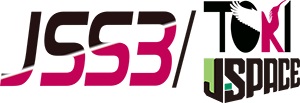Study on combustion instability
JAXA Supercomputer System Annual Report February 2023-January 2024
Report Number: R23ECMP16
Subject Category: Competitive Funding
- Responsible Representative: Seiji Tsutsumi, Research and Development Directorate, Research Unit III
- Contact Information: tsutsumi.seiji@jaxa.jp(tsutsumi.seiji@jaxa.jp)
- Members: Junya Aono, Masahito Akamine, Hiroyuki Ito, Noriyasu Omata, Seiji Tsutsumi
Abstract
In this study, LES analysis was carried out for Continuously Variable Resonant CoContinuously Variable (CVRC), and the contraction model which can predict the occurrence of vibration combustion was developed based on the obtained result, aiming at the prediction of vibration combustion.
Reference URL
N/A
Reasons and benefits of using JAXA Supercomputer System
LES analysis and analysis of the results require large computational resources.
Achievements of the Year
In this study, a model combustor for liquid propellant rocket engines, the Continuously Variable Resonance Combustor (CVRC), was numerically analyzed using compressible Large-Eddy Simulation. By adjusting the temperature of the oxidizer inlet, the vibration combustion of the primary longitudinal mode can be generated. In the analysis at 700 K and 720 K, an amplification of the longitudinal combustion instability was observed. It was found that the combustion instability is governed by the period of the stationary wave in the combustor, the period of the traveling wave propagating in the oxidant inlet post, and the time until the disturbance reaches the combustor inlet and propagates through the fuel/oxidant shear layer to release and mix heat. Based on the obtained results, a reduced model to predict the occurrence of oscillatory combustion was tried based on the Matveev and Culick (Combust.Sci.Tech. 175 (6) 2003) model. From the original model, two points are extended: modeling of traveling waves in an oxidant inlet post and handling of diffusion flames. The development of the contraction model will be continued.
Publications
N/A
Usage of JSS
Computational Information
- Process Parallelization Methods: MPI
- Thread Parallelization Methods: N/A
- Number of Processes: 8 – 32
- Elapsed Time per Case: 10 Hour(s)
JSS3 Resources Used
Fraction of Usage in Total Resources*1(%): 0.03
Details
Please refer to System Configuration of JSS3 for the system configuration and major specifications of JSS3.
| System Name | CPU Resources Used(Core x Hours) | Fraction of Usage*2(%) |
|---|---|---|
| TOKI-SORA | 770625.60 | 0.03 |
| TOKI-ST | 11703.04 | 0.01 |
| TOKI-GP | 0.00 | 0.00 |
| TOKI-XM | 0.00 | 0.00 |
| TOKI-LM | 177.80 | 0.01 |
| TOKI-TST | 0.00 | 0.00 |
| TOKI-TGP | 0.00 | 0.00 |
| TOKI-TLM | 0.00 | 0.00 |
| File System Name | Storage Assigned(GiB) | Fraction of Usage*2(%) |
|---|---|---|
| /home | 77.43 | 0.06 |
| /data and /data2 | 13605.23 | 0.08 |
| /ssd | 0.00 | 0.00 |
| Archiver Name | Storage Used(TiB) | Fraction of Usage*2(%) |
|---|---|---|
| J-SPACE | 99.25 | 0.36 |
*1: Fraction of Usage in Total Resources: Weighted average of three resource types (Computing, File System, and Archiver).
*2: Fraction of Usage:Percentage of usage relative to each resource used in one year.
ISV Software Licenses Used
| ISV Software Licenses Used(Hours) | Fraction of Usage*2(%) | |
|---|---|---|
| ISV Software Licenses(Total) | 229.43 | 0.10 |
*2: Fraction of Usage:Percentage of usage relative to each resource used in one year.
JAXA Supercomputer System Annual Report February 2023-January 2024


